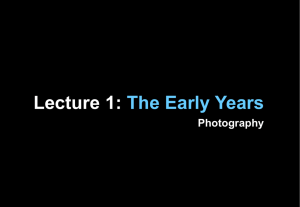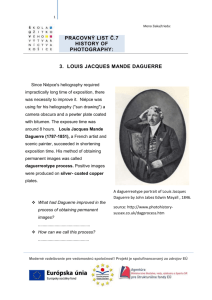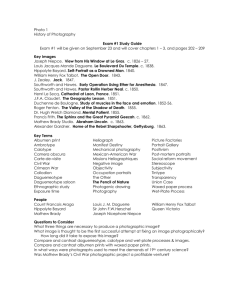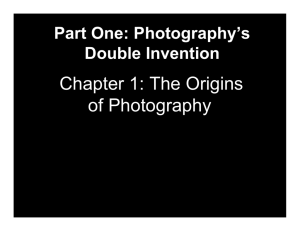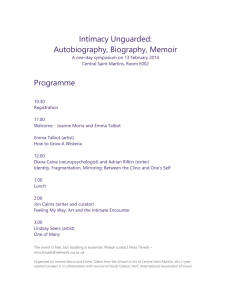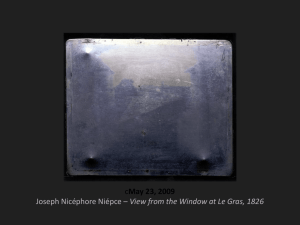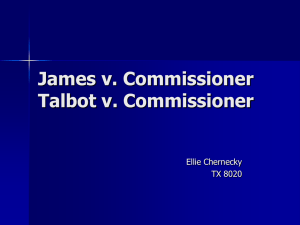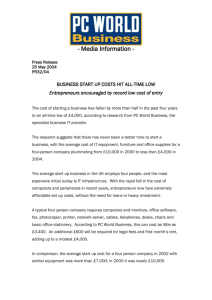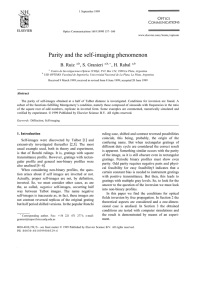Photography as a radiation detector
advertisement
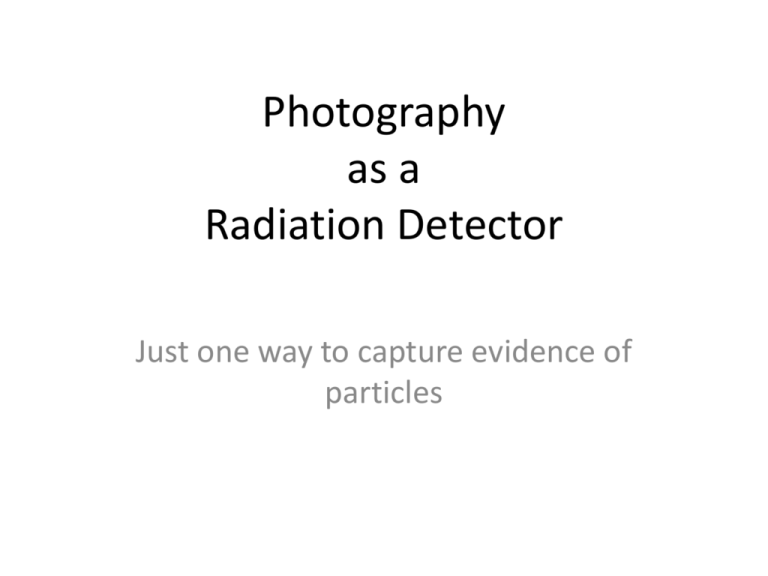
Photography as a Radiation Detector Just one way to capture evidence of particles There are many chemical systems that are sensitive to light. The one we’re using is just a modern & cheap & foolproof one. • The key to any of these systems, is to be able to STOP the sensitivity at some point • This is a solar print, available at science stores • Violet photons carry more energy than red photons. So most systems are exposed more at short wavelength light. Long λ Low f Low energy Short λ high f high energy • But some systems may only work in a narrow band. Long λ Low f Low energy Short λ high f high energy • And some systems may only work above a cutoff point Long λ Low f Low energy Short λ high f high energy • Wilhelm Homberg described how light darkened some chemicals (photochemical effect) in 1694.[15] • The fiction book Giphantie, published in 1760, by French author Tiphaigne de la Roche, described what can be interpreted as photography.[14] • The first permanent photoetching was an image produced in 1822[7] by the French inventor Nicéphore Niépce, but it was destroyed by a later attempt to duplicate it.[7] Niépce was successful again in 1825. He made the first permanent photograph from nature (his View from the Window at Le Gras) with a camera obscura in 1826.[17] • Because his photographs took so long to expose (eight hours), he sought to find a new process. • • • • Louis Daguerre, they experimented with silver compounds based on a Johann Heinrich Schultz discovery in 1816 that a silver and chalk mixture darkens when exposed to light. Niépce died in 1833, but Daguerre continued the work, eventually culminating with the development of the daguerreotype in 1837. Daguerre took the first ever photo of a person in 1838 when, while taking a daguerreotype of a Paris street, a pedestrian stopped for a shoe shine, long enough to be captured by the long exposure (several minutes). Eventually, France agreed to pay Daguerre a pension for his formula, in exchange for his promise to announce his discovery to the world as the gift of France, which he did in 1839. A latticed window in Lacock Abbey, England, photographed by William Fox Talbot in 1835. Shown here in positive form, this is the oldest known extant photographic negative made in a camera. Meanwhile, Hercules Florence had already created a very similar process in 1832 in Brazil, naming it Photographie English inventor William Fox Talbot had earlier discovered another means to fix a silver process image but had kept it secret. After reading about Daguerre's invention, Talbot refined his process so that portraits were made readily available to the masses. By 1840, Talbot had invented the calotype process, which creates negative images.[18] Talbot's famous 1835 print of the Oriel window in Lacock Abbey is the oldest known negative in existence. Some monochromatic pictures are not always pure blacks and whites, but also contain other hues depending on the process. The cyanotype process produces an image composed of blue tones. The albumen process, first used more than 150 years ago, produces brown tones. The first permanent color photograph was taken in 1861 using the three-color-separation principle first published by physicist James Clerk Maxwell in 1855. Maxwell's idea was to take three separate black-and-white photographs through red, green and blue filters. This provides the photographer with the three basic channels required to recreate a color image. What are these things being captured? The bigger the jump down, the more energy, the shorter the wavelength, the higher the frequency Henri Becquerel • “Discovered” radioactivity by sweeping stuff into a drawer to clean up on a Friday. • Like some rocks. • Radioactive rocks. • Which exposed the photographic chemicals at the bottom of the drawer. • My wife cleans up by sweeping stuff in the drawer, too. Oops. Photons can be produced by other kinds of quantum interactions Lots of energetic particles can expose photographic chemicals Emulsion photo of cosmic ray sulphur nucleus
